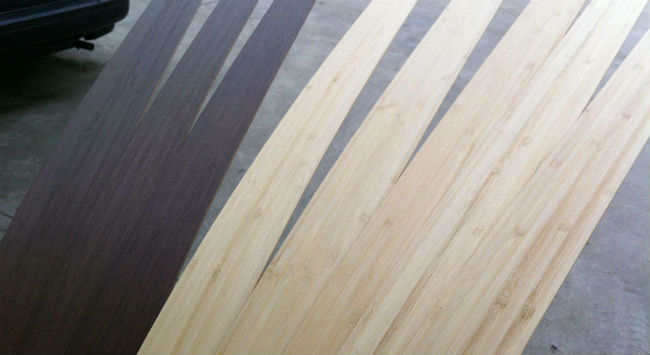Bamboo Veneer & Equipment Technologies: The Ways to Derive the Final Product
Dec 3, 2025, 9:20 AM
Bamboo is currently a popular and highly-in-demand resource for development that provides environmental sustainability and reduces poverty to a considerable extent. No wonder more and more people are choosing bamboo for the right reasons and thanks to its widespread availability that others are also following suit. But if you thought merely taking out bamboo after the harvest period is over is the end of the job, you are mistaken.
Being a vital non-timber forest product, especially in Asia; bamboo and its commodities are highly in demand. The way bamboo veneer is made is also a process that has interested many. Besides, the plant has contributed significantly to securing the livelihood of millions of indigenous people in several regions. From adopting the complex processes of harvesting and processing to extracting bamboo veneer, plywood and making a series of items, the workers have done it all. Over time, traditional technologies have been passed to generations and undergone vast modifications, refinement and implementation.
For most of us unaware of how the complete process happens, here’s taking a look at it:
Harvesting
Much before you get your bamboo veneer, the harvesting is done. This is because the bamboo resource cannot be completely depleted. There are certain rules while doing, like:
In the year of flowering, the clumps should not be cut. But when the seeds are shed, it is allowed.
The shoots produced as a result of the last rains can also be cut.
A minimum of three healthy, mature and erect culms spanning 3 meters in height should be left in each clump and that includes shoots of the last rains.
Rhizomes must not be dug or extracted.
Also, when the shoots are cut, the height should be about 150 to 300 mm above the ground. So where clumps are congested, the cutting must be made at the lowest point.
If you wish to prevent any tearing or splitting of culms, the use of sharp implements is advised (like Delimbing Knives for removing branches, or hacksaws or hand saws).
Preparation
In the primary aspect, the culms must be cross-cut. Think of saws so as to obtain faster and better service. If you wish to make furniture and choose bamboo veneer, ensure that the material at the nodes are removed using very sharp knives or large-sized hacksaws having molybdenum steel blades.
For secondary preparation, the gummy substances can be extracted and reduced in starch content. Basically, removal of gummy substances provides an even color while starch removal decreases attacks by insects, fungi and so on. A commonly practiced method is keeping the bamboo immersed in water for about 90 days or felling culms with eth branches kept intact and making them stand upright for two weeks. Apart from theses physical methods, the chemical ones are also employed in few places.
Processing
For use in woven products, culm is split into strips, which is further processed to get slivers and splits. A good method of doing it is when two pairs of slits are made at right angles from the top end of the culm and they are held open in wedges till the culm is made into the right position on the cross. A steel wedge can be used to split the quartered culms. Now for fairly thicker ones, two cuts at perpendicular positions can be made on one end of the culm and any plus-shaped contrivance is put in the cuts to be pushed down after hammering lightly using the knife back. For the thin-walled ones, a small rod works good. Take into consideration the culm diameter and the width of the strips. You can use a knife or machete to split, but check to see that it has a broad blade of hardened steel. The strips are then divided into splits and then made into slivers.
Finishing
Depending on the end-use of the product, the finishing methods are differently employed and also vary from place to place:
- Smoking: Finished product is subjected to continued smoking over a fireplace and this makes the weft darker in color.
- Lacquering: This is an old method but it works fairly nice.
With these, your bamboo is ready to be used. Derive the veneers or make plywood and enjoy the experience of it.



 皖公网安备 34180202000049号
皖公网安备 34180202000049号